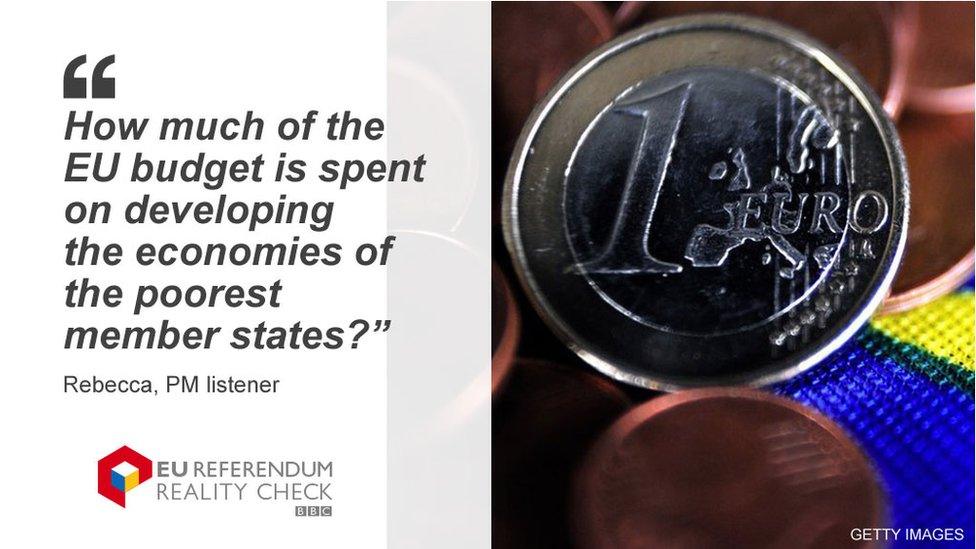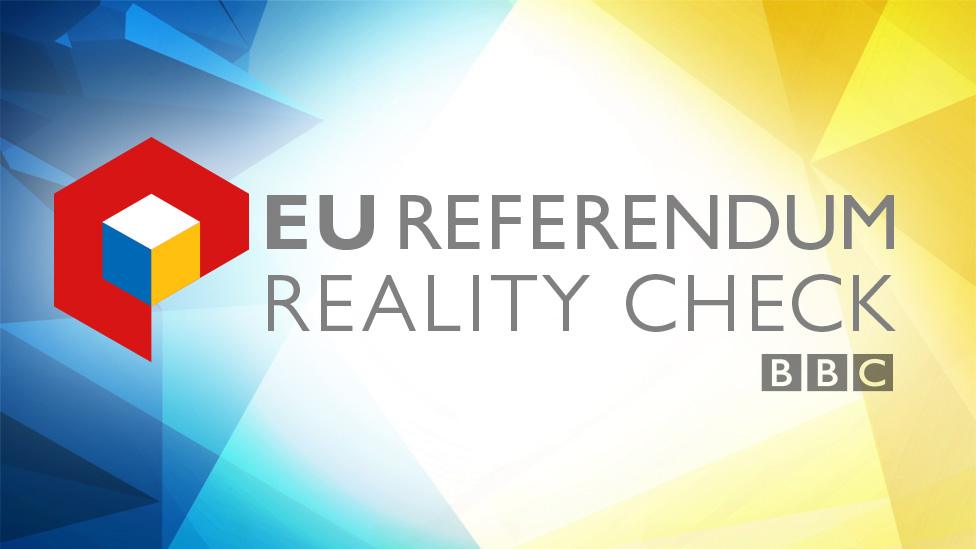Reality Check: How much EU money goes to poorer countries?
- Published

The question: Rebecca asks BBC Radio 4's PM programme "How much of the EU budget is spent on developing the economies of the poorest member states, from which a large majority of economic migrants come? Many of whom do so reluctantly, leaving family members behind due to limited opportunities in their own countries."
Reality Check verdict: The poorest countries received about 25% of overall EU expenditure in 2014, according to the European Commission.
Bulgaria is the poorest member state in the EU (as measured by GDP per capita), followed by Romania, Croatia, Poland and Hungary.
Together, these countries received about 25% of overall EU expenditure in 2014, according to European Commission figures.
Poland is the largest net recipient.
It received €13.48bn (£10.41bn) in 2014 and was followed by Hungary, Greece, Romania, and Portugal.
A large share of this EU money is invested through the European Regional Development Fund, European Social Fund or the Cohesion Fund.
These support a large variety of regional and local projects.
For example, in Poland, the European Regional Development fund has contributed over €10m (£7.76m) to the construction of a wind-farm scheme.
In Hungary, the expansion of a local kindergarten received about €600,000 (£465,916) from the EU, creating education and training for an additional 100 children.
More information on the breakdown of EU funds spent in each EU member state as well as examples of regional and local projects are available on this European Commission financial report., external
Citizens from these EU member states make up about 3% of the UK resident population, according to figures from the Office of National Statistics, external.
Roughly 234,000 Romanians and Bulgarians and 1.3 million citizens from other Eastern and Central European countries, including Poland and Hungary, were resident in the UK in 2014.
Poles are the most common non-British residents, with an estimated 853,000 living in the UK.



- Published22 February 2016

- Published10 May 2016
